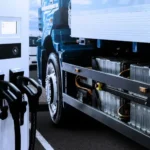Ridesharing has become a transformative force in transportation, redefining how people commute and travel. This in-depth exploration delves into the fundamental principles, key components, recent innovations, notable applications, and the transformative impact of ride-sharing on modern mobility.
Understanding Ridesharing
Ridesharing, or carpooling or ridesharing, is a transportation model where individuals share a single vehicle to reach a common destination. Enabled by digital platforms and mobile applications, it provides a convenient and efficient alternative to traditional modes of transportation, reducing congestion and contributing to more sustainable urban mobility.
Key Components of Ridesharing
The effectiveness and popularity of ride-sharing hinge on several key components:
- Digital Platforms: It is facilitated through dedicated digital platforms and mobile applications that connect riders with drivers. These platforms offer real-time tracking, price estimation, and seamless payment transactions, enhancing the user experience.
- Dynamic Routing Algorithms: These platforms utilize sophisticated algorithms to optimize routes in real-time, ensuring efficient and time-sensitive transportation. These algorithms consider traffic conditions, rider locations, and driver availability to provide the most streamlined routes.
- Rating Systems: To ensure a safe and reliable experience, ridesharing platforms incorporate rating systems. Both riders and drivers rate each other after each trip, fostering accountability and maintaining a high standard of service within the ridesharing community.
Recent Innovations in Ridesharing
Recent innovations have elevated ridesharing to new heights, addressing key challenges and enhancing the overall experience:
Shared Mobility Services
In addition to individual rides, its platforms have expanded to include shared mobility services such as shared and pooled rides. This approach maximizes vehicle occupancy, reduces costs for riders, and promotes a more sustainable use of transportation resources.
Integration of Electric and Autonomous Vehicles
Ridesharing is at the forefront of embracing environmentally friendly and futuristic technologies. Integrating electric and autonomous vehicles into ridesharing fleets aims to reduce carbon emissions and enhance safety, marking a significant step toward the future of smart and sustainable transportation.
Multimodal Integration
Its platforms are increasingly integrating various modes of transportation to offer comprehensive mobility solutions. Users can seamlessly transition between ridesharing, public transit, biking, and walking within a single app, providing a holistic approach to urban mobility.
Notable Applications of Ridesharing
Ridesharing extends beyond mere transportation, influencing various sectors and industries:
Urban Congestion Mitigation
It contributes to mitigating urban congestion by reducing the number of single-occupancy vehicles on the road. These platforms are vital in optimizing urban transportation and minimizing traffic-related challenges by encouraging shared rides.
Last-Mile Connectivity
Its services bridge the gap in last-mile connectivity, addressing challenges in accessing public transportation. Users can easily book rides to and from transit hubs, ensuring a seamless and efficient journey from origin to destination.
Economic Opportunities and Job Creation
Ridesharing platforms create economic opportunities for individuals to earn income by becoming drivers. This model has facilitated job creation and provided flexible earning options, particularly for those seeking part-time or supplementary income.
Accessibility for Diverse Demographics
It enhances transportation accessibility for diverse demographics, including individuals with mobility challenges, elderly populations, and those residing in underserved areas. The convenience and flexibility of ridesharing contribute to a more inclusive transportation system.
Challenges in Ridesharing
While ridesharing has brought numerous benefits, it faces challenges impacting widespread adoption and efficiency:
Regulatory Frameworks and Compliance
The rapid growth of ridesharing has led to regulatory challenges, with authorities working to establish frameworks that balance innovation with safety and compliance. Striking the right regulatory balance is crucial for the sustainable growth of the ridesharing industry.
Safety and Security Concerns
Ensuring riders’ and drivers’ safety and security remains a top priority. Ridesharing platforms continuously invest in safety features, background checks, and technology to address concerns related to personal security during trips.
Traffic Congestion Impact
While ridesharing aims to reduce individual vehicle usage, the increased presence of ridesharing vehicles on the road has raised concerns about potential impacts on traffic congestion. Striking a balance between convenience and mitigating congestion remains a challenge.
Future Trends in Ridesharing
As technology continues to advance, the future of ridesharing promises exciting trends that will further redefine capabilities and applications:
Integration with Public Transit Systems
The future of ridesharing involves deeper integration with public transit systems. Seamless connectivity between ridesharing services and public transportation modes aims to create a comprehensive and efficient urban mobility network.
Sustainable Fleet Management
Ridesharing platforms increasingly focus on adopting sustainable practices, including integrating electric and hybrid vehicles into their fleets. Sustainable fleet management contributes to environmental conservation and aligns with global efforts to reduce carbon emissions.
Enhanced User Experience Through AI
Integrating Artificial Intelligence (AI) promises an enhanced user experience in ridesharing. AI algorithms can predict user preferences, optimize route planning, and even anticipate demand spikes, ensuring a more personalized and efficient service.
Rural and Underserved Area Expansion
The future of ridesharing includes efforts to expand services to rural and underserved areas, addressing transportation gaps in regions with limited access to public transit. This expansion aims to make ride-sharing more inclusive and accessible to diverse communities.
Conclusion
Ridesharing is a transformative force, reshaping the landscape of urban mobility and personal transportation. From mitigating congestion to providing economic opportunities and enhancing accessibility, it has become integral to modern transportation systems. Despite facing challenges, ongoing innovations in shared mobility services, technology integration, and sustainable practices signal a promising ridesharing future. As research and development continue to push the boundaries of what is possible, it is poised to play a central role in shaping the future of urban mobility on a global scale.










